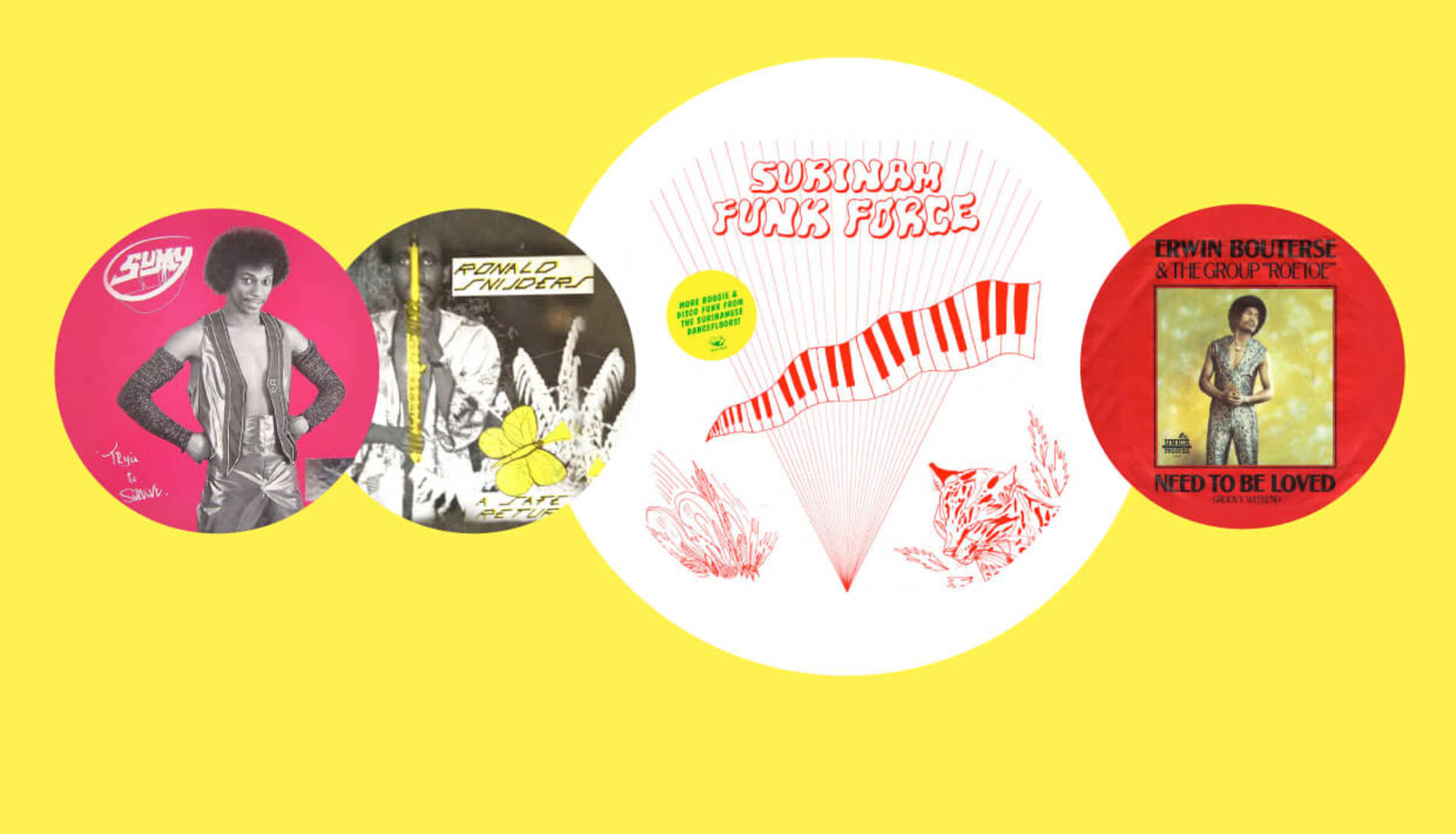
Genre Guide: Antal Picks His Favorite Surinamese Funk Songs
The Netherlands has a large Surinamese population because Surinam was a former Dutch colony, and so a lot of Surinamese music has been produced here. It’s all inflected with the sounds from the many cultural backgrounds of its inhabitants, from Creoles to Hindus, Javanese, Native Americans and Chinese, among others. For example, kaseko is a Creole music that’s played at celebrations. There’s also Hindustani baitak gana and Javanese pop, which is pop combined with a bit of Javanese krontjong. The background behind the music is always fun to find out—especially with songs as old as these, because people can tell you at least 30 years of their own history in music. Thomas Gesthuizen [a leading figure in African hip-hop] and I found most of the Surinamese funk tunes I’ve listed below via friends, dealers and at record fairs, and it took us around 10 years to arrive at this selection.
Sopiang Kawina “Kolibrie” (Gemini 1979)
This a great example of kawina music, a form of Surinamese Creole folk music that originated in 1863 after the abolition of slavery. It’s layered with all types of local percussion, including the skratjie, which is a large kettle drum-type thing. More recently the sound has been adopted by young Surinamese nationals in the Netherlands who have bridged it with more contemporary percussion instruments and steel drums.
https://www.youtube.com/watch?v=K53ovhQhD3A
Kaseko Masters “Horie Joe Blo” (Disco Amigo 1977)
This is an example of some dance floor kaseko, which is a derivation of kawina. Based around the question-and-answer style vocals along with the skratjie, the music was heavily influenced by New Orleans jazz, and then later on, more traditional Latin music.
Lieve Hugo “Mi Bè Bè” (EMI 1975)
This is some Afro-funk by the selt-titled “king of kaseko.” Born Julius Theodoor Hugo Uiterloo in Amsterdam in 1934, Lieve Hugo was one of the main founders of kaseko, and his debut album, Dear Hugo: King of Kaseko is one of the best-selling Surinamese albums of all time.
Sumy “Soul With Milk” (Galaxy Inc. 1983)
To many, Sumy is the cult funk icon from Surinam. Named after a legendary record store in Amsterdam that sold funk music to the white populace, this is one of the better known Surinamese funk records.
Ronald Snijders “Lenox” (Black Straight Music 1980)
Ronald Snijders is one of the best. Having mastered the flute, he has been the subject of various documentaries, appeared at North Sea Jazz Festival and other leading European events and also received the Order of the Yellow Star, an award granted by the president of Surinam. Snijders is one of the best known Surinamese stars in the Netherlands and is a jazz great.
Jam Band 80 “Jammin” (JAM)
This is a hyper-obscure funky tune that was only recently discovered by a friend of Thomas’. It’s a classic example of going to the flea markets for years and getting inspired by the unknown.
Erwin Bouterse & Roetoe “Groovy Weekend” (Unice)
This is an example of US-sounding funk mixed with Surinamese elements, and it was featured on the original Surinam re-issue compilation released by Kindred Spirits.
Happy Boys “Kronto” (Fajalobie)
Happy Boys is one of Lieve Hugo’s bands. “Kronto” means coconut in Sranan, the language of Surinam.
Happy Boys “Dji Den” (Fajalobie)
This one’s another solid, upbeat record by the Happy Boys fashioned in the Kaseko funk style.
Sound Track Orchestra And Silvy “Tirsa Song” (Rayo Production)
This one was featured on the Surinam Funk Force release. The group’s singer, Silvy Singoredjo, was a fixture in the Surinamese scene for years and still performs in the Netherlands today.
Surinam Funk Force, a collection of rare Surinamese songs compiled by Antal and Thomas, is out now via Rush Hour.
Published October 11, 2016. Words by Dan Cole.
